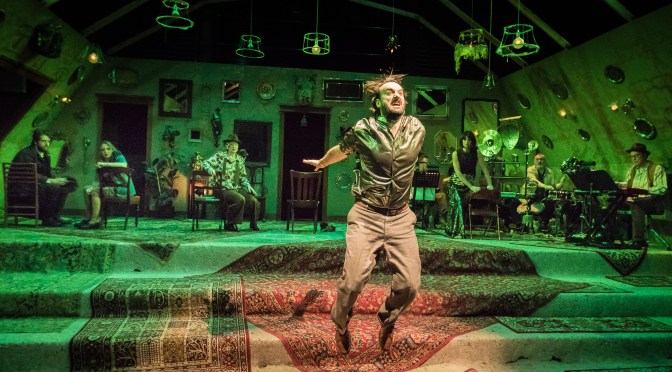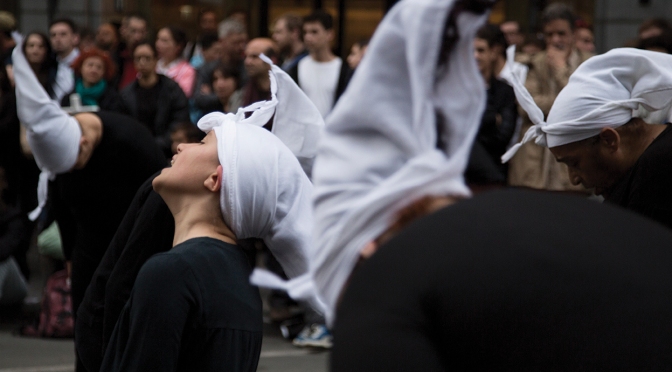I once took a directing workshop where the facilitator’s approach to Chekhov was to have actors physicalize their characters’ subtext and then cram that sensation back into the translucent container of the lines. It’s an interesting exercise, but it begs the question: why the extra step? Why not just let the subtext lead the charge? Why not shake it up like a bottle of champagne and let it explode all over everything?
PETE’s Uncle Vanya does exactly that, and it’s glorious. All the little kinks and complications of plot are there too, if you want to look for them, but this production does something braver and more beautiful than just retreading the events of the play — it stages the heart beating under the text. Every word that isn’t straight from the heart is a smokescreen, and both Štěpán Šimek’s translation and Cristi Miles’ direction know it. (Adjectives fail me here, for their contributions as much as for the staggering work of all the designers, actors, and musicians combined: vivid, sharp, wild, brilliant in every sense. “Loose” feels somehow right, too, but that would deny the precision and clear intent every component of this production radiates — loose in the sense of having room to breathe, to really laugh, to take a shot and shimmy across the floor if that’s what the moment needs).
It works because so much more than writing about country estates or samovars or strategically placed firearms, Chekhov writes about being human. About pettiness and stuffiness and snobbery, sure, but also about the deliciousness of inopportune fits of longing, or the burst of giddiness that comes with an epiphany. His characters are always trying desperately to be alive, and always blind to the fact that trying so hard defeats the purpose.
Sometimes you go see a show and you come out entertained. Sometimes you come out energized, or outraged, or weeping. I left thinking that this is what theatre should always feel like — slipping in through the back door to a party in full Technicolor swing, with tears woven in through every laugh, and the reminder that being our most human is the best we can hope to be.

